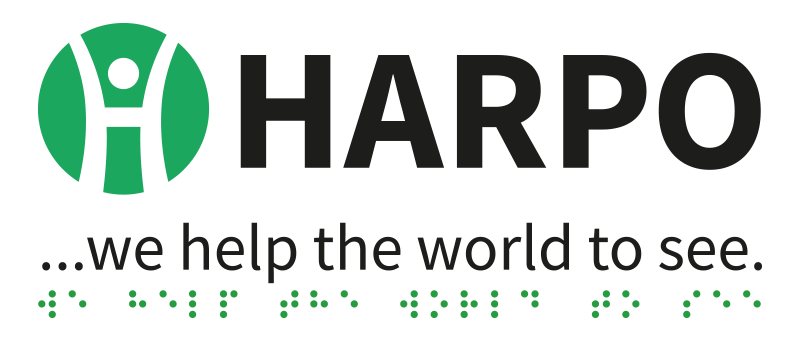– we all need to be literate.
Education and employment both require us to be literate; this is no less so for the blind citizen. Literacy for the sighted person begins in early childhood, where we are bombarded by signs, labels, printed packaging and captions on TV.
Already the blind child is being marginalised, so they need really effective learning tools to help bridge the gap.
We will add new content to this page as we receive new input and learn of new projects. Please visit often!
Follow the links to read more about Braille literacy research, to read papers from educators and technologists, and to read input from educators.
Research
Papers
These papers are PDF files, which will open in Adobe Acrobat or a similar PDF reader. If you don’t have Acrobat installed on your system, you can download it from the Adobe website, http://get.adobe.com/reader/.
Click here to jump to the list of papers.
Considerations
- Problems with mechanical Braille writers
- Braille Writer or Refreshable Braille for the first steps?
- Barriers to Innovation
- Expectations
Research
Braille Literacy Research with the Mountbatten in Canada
One of the few research projects focusing on Braille writing has been the Emerging Braille Literacy Research Project in British Columbia, Canada. The project was conducted from 1998 through 2000, by Cay Holbrook (UBC), Anne Wadsworth (PRCVI) and Elaine Ferguson (SET-BC). The project involved 16 primary aged students, their teachers and parents over a three year period and was aimed at developing objective data to guide their technology policies for early Braille literacy. The results indicated that the use of the Mountbatten Brailler had very positive effects on Braille reading and writing skills in addition to enhanced opportunities for inclusion. The SET-BC report on the project is online here; this is a downloadable PDF file. You can also read the team’s article from the Journal of Visual Impairment and Blindness here.
Braille Literacy Research with the Mountbatten in Texas
The Early Braille Readers Project was a collaborative project between Texas School for the Blind and Visually Impaired (TSBVI) and selected regional Education Service Centers throughout Texas. The purpose of this project was to increase the quantity and quality of literacy experiences for early Braille readers in general education classes in the state of Texas, and it was administered by TSBVI Outreach staff. The original announcement is here: http://www.tsbvi.edu/Outreach/seehear/winter03/braille.htm and the report was published in the Journal of Visual Impairment and Blindness in January 2007. To see a copy of the report click here. This document is a PDF file.
The Ryles Study
Ruby Ryles PhD published a report entitled The Impact of Braille Reading Skills on Employment, Income, Education, and Reading Habits in the Journal of Visual Impairment and Blindness, issue 90(3) in 1996. Click here to read the full report.
Papers
- Integration in a Changing Europe
- Braille Technology in Cognitive Development
- Teachers’ Perceptions of using the Mountbatten Brailler with Young Students
- Notes from a Teacher’s Presentation at the Odyssey 2001 Conference, at the University of British Columbia, Canada
Considerations
If you are thinking about suitable tools for Braille learning, we hope you’ll take the following considerations on board as part of your decision-making process:
Problems with mechanical Braille writers
- Ergonomics, finger layout, the pressure required to press the keys, the difficulty to move or carry are some of the smaller problems.
- The first really big problem is that we are not providing the student with the opportunity to learn independently. A mechanical Braille writer is only really meaningful when a Braille-literate person is present and in integrated education that cannot be assured.
- The second major problem is that there is no serendipitous or concurrent learning taking place. The skills acquired through using a mechanical Braille writer are simply no longer relevant to other technologies, and this makes the transition to electronic note-takers and computers a major undertaking instead of a sequential step up the technology ladder.
- The third large problem is that a mechanical Braille writer doesn’t create opportunities to use Braille as a means of communicating with peers, siblings and classmates. Instead of Braille facilitating integration and communication of blind students, it becomes a barrier that others can’t use or understand.
First Steps – Braille Writer or Refreshable Display?
Amongst current educational philosophies, there is an acceptance that there are clear developmental stages of intellectual growth. Piaget identified four stages of intellectual development as being:
- Sensorimotor, birth to 2 years
- Pre-operational Thought, 2 to 6 years
- Concrete Operations, 6 to 12 years
- Formal Operations, 12 years to adulthood
It is only in the latter part of the Concrete Operations stage that children start to develop the ability to think on the abstract level. If this is the case then it is reasonable to assume that until this point, blind students require the concrete experience of working with hard copy Braille on a full page of Braille.
Currently many educators are asking why an early Braille learner shouldn’t start off using an electronic note-taker with refreshable Braille. These are more portable and will be used by the student right through into university and beyond. However, when we give a young student a single line of Braille that refreshes we are asking them to think in the abstract, to be able to imagine a full page of Braille and extract a single line and make it separate. This places many limitations on their literacy skill development, including:
- the ability to compare information from one part of a page to another
- their understanding of layout and format and why they are important
- separation from general class literacy activities such as spelling lists, find-a-word, writing exercises and the like
- reading skills, especially tracking
- mathematical and music Braille which require multiple lines
Clearly it is essential that students first learn Braille on a page. The point at which a student can make a transition to a note-taker is highly individual and certainly academically gifted students can do this much earlier than others.
Regardless of their age it is most important that children develop these early literacy skills using a full page of Braille prior to moving to the abstraction of a single line, and to do this they need a Braille writer.
Expectations
Here is a list of the technology standards expected of students prior to completion of Grade 2 – the second year in Elementary or Primary School, around 7-8 years of age. They highlight dramatically why we need to link Braille and technology skills from the earliest possible age.
- Use input devices (e.g., mouse, keyboard, remote control) and output devices (e.g., monitor, printer) to successfully operate computers, VCRs, audiotapes, and other technologies.
- Use a variety of media and technology resources for directed and independent learning activities.
- Communicate about technology using developmentally appropriate and accurate terminology.
- Use developmentally appropriate multimedia resources (e.g., interactive books, educational software, elementary multimedia encyclopedias) to support learning.
- Work cooperatively and collaboratively with peers, family members, and others when using technology in the classroom.
- Demonstrate positive social and ethical behaviors when using technology.
- Practice responsible use of technology systems and software.
- Create developmentally appropriate multimedia products with support from teachers, family members, or student partners.
- Use technology resources (e.g., puzzles, logical thinking programs, writing tools, digital cameras, drawing tools) for problem solving, communication, and illustration of thoughts, ideas, and stories.
- Gather information and communicate with others using telecommunications, with support from teachers, family members, or student partners.
Barriers to Innovation
Attitudinal: Teachers of VI children have correctly been taught that the process of writing is what’s important, and it doesn’t matter which writing tool is being used. But when his is combined with the prevailing 'attitude of scarcity’ where VI teachers are „grateful for what we have” and are not demanding what is best, (thereby driving innovation through consumer demand), stagnation has resulted.
Isolation: VI teachers are a small, geographically isolated community, and it is often hard to know what is happening in the next state or county, let alone in other countries around the world.
Funding: Best practice is most frequently being defined within a personnel preparation system that is chronically under-funded and simply not able to afford the best technology available. A survey of 600 VI teachers in the US revealed that only 5% of respondents were made aware of alternatives to the mechanical Brailler as part of their teacher preparation program.
Lack of professional development: As new technology options arise, it is often left to VI teachers to train themselves on how to use them and to understand where and why a new technology should be used. A current example of this is the confusion and lack of research data on the role of Braille writing versus Braille note-taking.
Policy: Overwhelmingly we see policy development based on tradition and comfort zones rather than the best possible solution for the blind student or solid research data. Policies covering the availability of technology for students need to be aligned to the literacy outcomes expected and not on tradition and „local knowledge”. We need to define outcomes in terms of basic literacy skills but also in terms of the functional skills needed in a digital world, such as computer and other technical skills, as well as vocational skills.


